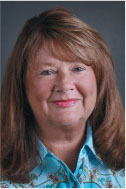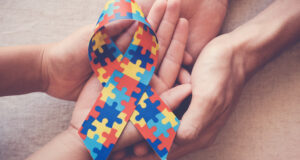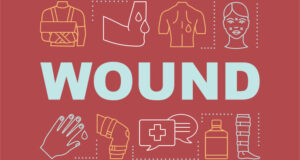
A Road Less Traveled: Bridge to Home
Benjamin Anthony was in an unfortunate situation as he developed a drug addiction and was homeless. Benjamin then suffered a stroke and ended up at Carolinas Medical Center (CMC) in Charlotte, North Carolina, a facility of Advocate Health. CMC is a level 1 trauma quaternary care center providing a safety net for all patients in the metropolitan area. Benjamin had Medicaid and had been denied an inpatient rehabilitation due to being homeless, yet he was dealing with right-sided weakness and aphasia due to his stroke. Fortunately, CMC has a Bridge to Home (BTH) program, which serves unfunded or underfunded patients by giving them two to three hours of therapy daily for approximately two weeks. Mr. Anthony needed to perform stairs to access his new living arrangements. After two weeks of intensive therapy, he climbed the stairs. This was a massive accomplishment, to navigate and walk up a flight of stairs. Additionally, case management was able to find stable housing for Mr. Anthony, so he did not have to return to the shelter. Mr. Anthony said, “This program helped me have a new life. I quit smoking and will start dancing again.”

Since its inception in 2019, the BTH has served over 250 patients. It started out as a pilot at Carolinas Rehabilitation, as CMC sent patients to the on-campus inpatient rehabilitation facility for the day. The pilot was so successful that CMC administration approved converting a waiting room in the hospital to a therapy gym. Two additional full-time therapists were approved and were able to treat the patients in the BTH program. The program moved to CMC and became an in-house rehabilitation option for underserved patients.
“The Bridge to Home Program has been absolutely transformative for patients with limited disposition options and cognitive or physical barriers to discharge. The program has achieved substantial improvements in participating patients that had otherwise plateaued, enabling them to be discharged from the hospital when they could not be discharged before being enrolled. The program not only improves the outcome of participants but enhances throughput for patients who would otherwise have limited options.” — Dr Addison May Chief, MD, MBA, FACS Division of Acute Care Surgery
The magic occurs with the relationships between therapy and case management. Case management identifies potential candidates who will not be accepted into traditional inpatient rehabilitation free-standing facilities. Case management and therapy agree that these patients need acute rehabilitation to transition to the next level in their care. In-hospital lead therapists screen the referred patients from case management, and, together with the entire interdisciplinary team, a decision is made as to whether the patient can improve their functional status and have support at home to be accepted into BTH.

Once the patient is accepted, the team communicates updates and any equipment needs. If a patient needs equipment to discharge safely with family, the therapists make the recommendations and the case manager fills out an application for ASSIST ME, a nonprofit volunteer organization that repurposes used equipment. From 2019- 2022, CMC issued $102,000 worth of repurposed equipment to the Bridge to Home recipients, helping 60% of the patients. If ASSIST Me does not have the necessary equipment, CMC purchases it for a safe discharge. CMC has a relationship with a contractor who builds ramps for patients needing one to access their home upon discharge from CMC. The team has also held clothing drives for patients including shoes, and volunteer services also assist with any clothing needs the patients may have.
Maggie Kruez stated, “I loved my time working in the BTH program! It was so rewarding to work with such a great team to take some of the most medically and socially challenged patients in the hospital and find creative ways to maximize their independence and facilitate their discharge. We developed such good relationships with our patients and even recently had a visit from our very first patient who had a very devastating brain injury and has made such amazing progress!”
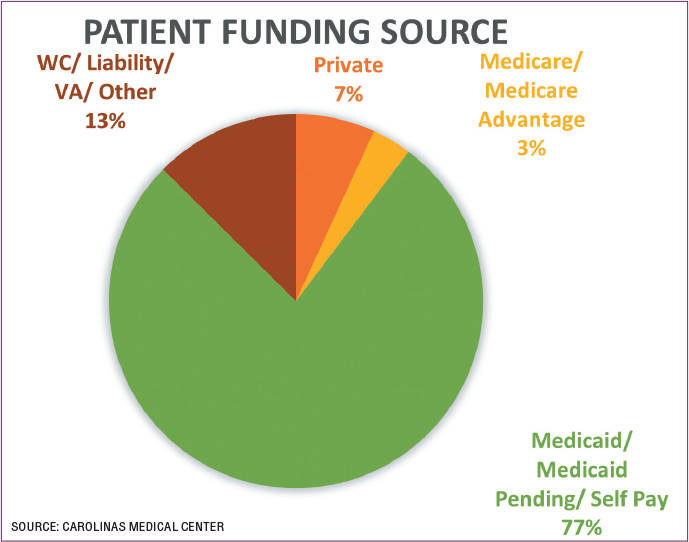
Results from 2019-2022 showed that 72% of patients served were male, 49% sustained a stroke or brain injury, 20% had a traumatic or non-traumatic spinal cord injury and 76% spoke English, with 26% speaking Spanish. In terms of insurance, 78% had Medicaid, Medicaid pending, or self-pay. Eighty percent of patients were discharged home, and only 6.9% were readmitted within 30 days. As measured by the “6-clicks” scale, mobility and activities of daily living scores improved significantly. The improvement was statistically significant and showed that the intense therapy made a remarkable functional difference.
Another patient was Pearlie Gillian, (pictured below) a patient who suffered a stroke and had no health insurance. She needed the help of two therapists to even move in bed. She started the Bridge to Home program within a week of having her stroke, and after two weeks of intense therapy, she was discharged home walking short distances without help, and her family was trained in assisting her.
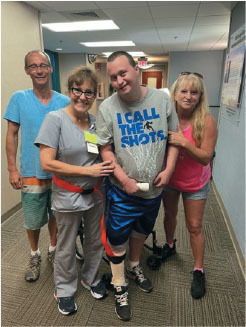
The program has truly given hope to the case managers and therapists feeling as if there was nothing they could do for these vulnerable, complicated patients. Case managers commented, “Bridge to Home has played a crucial role in optimizing patients’ success towards a safe transition to home in an efficient time frame. The therapists go above and beyond in tailoring the patient’s care plan towards the patient’s responsibilities as well as interests in their home environment. They include the patient’s family in their education and training and do a great job with the entire disciplinary team. This program has been so beneficial to our patients because they were not able to receive inpatient rehab.”-Christie Stalnaker and Marylou Thompson
“At the end of every workday, I ask myself if I made a difference in someone’s life today …because I work in the Bridge to Home program, my answer is yes, yes, yes!! We turn the impossible to possible for so many people.”- Michelle Molina
The Bridge to Home program has brought so much hope to so many patients who have had devastating injuries. All the treaters ask to work on this program as the rewards are so fulfilling and it has touched so many lives. “I am excited to be part of this program that has the potential to make an impact and change the way we provide care in our healthcare system.”- Kasey Orita
The Bridge to Home program has saved CMC close to $1 million/year in revenue by decreasing the length of stay by at least two weeks for this patient population, but more importantly it provides so much hope for a bright future for so many patients and families. The Bridge to Home program truly reflects the Advocate mission statement by giving “hope, health and healing for all.”


